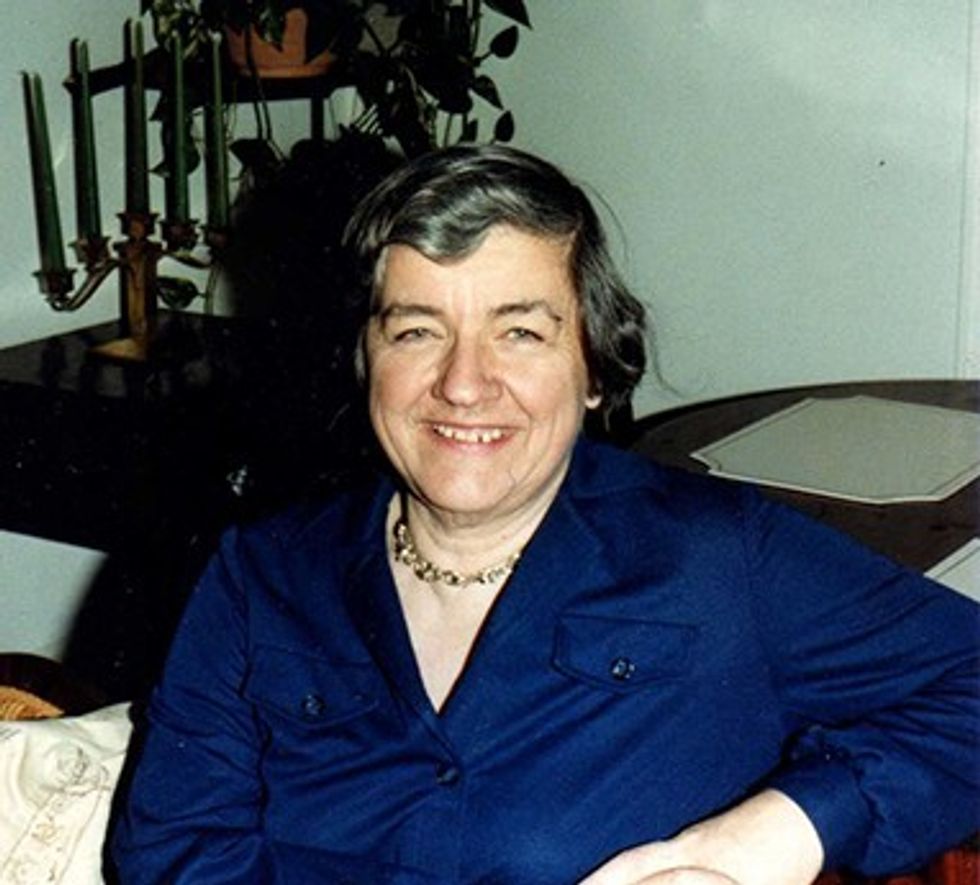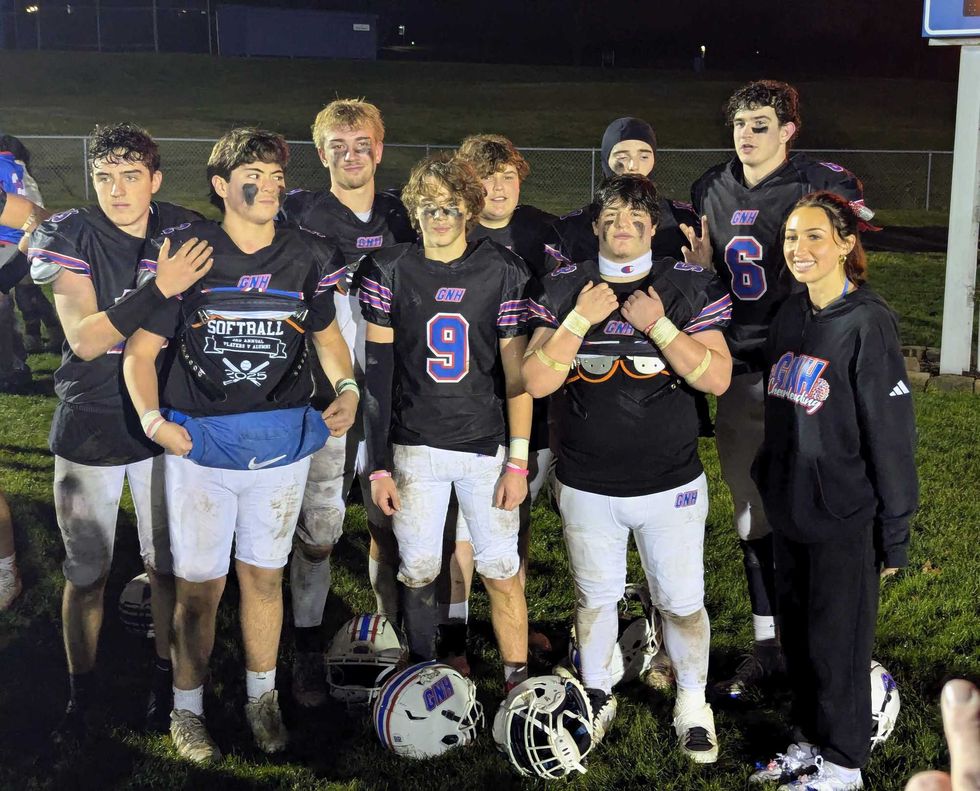Local civil rights lawyer won crucial women’s rights case in the 60s
Remembering Catherine Roraback

Catherine G. Roraback Photo courtesy Canaan History Center

NORTH CANAAN — Catherine Roraback must be spinning in her grave.
The fiery civil rights lawyer, who made Canaan her home, fought for women’s rights throughout her long life and in 1965 argued Griswold v. Connecticut all the way to the Supreme Court, thus establishing women’s right to use contraceptives.
The decision, based on the right to marital privacy, became the foundation in 1973 for Roe v. Wade, which ensured abortion rights. The conservative majority on the current Supreme Court struck down Roe v. Wade on Friday, June 24, leaving in doubt the future of other liberal rulings based on the right to privacy.
Roraback, who died in 2007, would be furious at, but not surprised by, recent events. She was never sanguine about the permanency of a woman’s right to decide her reproductive future.
“We’re still fighting and we have to keep on fighting,” she said in 2002 during a Planned Parenthood League of Connecticut event honoring her. On that afternoon she shuffled through a long list of George H.W. Bush appointees who had been opposed to reproductive rights, including a doctor who headed an FDA advisory committee on reproductive rights. She told the 2002 gathering that conservative Republican administrations have long been dedicated to reversing “the rights we have fought so hard to get,” noting that funding for reproductive care is always under threat.
That the reversal of Roe v. Wade has been a long-term strategy for conservative Republicans is evidenced by the fact that it was overturned by two judges nominated by Bush father and son, as well as three Trump appointees, who reasoned that there is no specific reference to privacy in the Constitution.
Chief Justice John Roberts split hairs, saying he would have supported the Mississippi law that triggered the judicial review, but believes that overturning Roe v. Wade went too far.
Catherine Roraback exhibited no such equivocation when it came to women’s rights. Her involvement in the battle over reproductive rights began when she was tapped by Planned Parenthood League of Connecticut to argue the 1961 case of Estelle Griswold and Dr. C. Lee Buxton. Griswold, executive director of the Planned Parenthood League of Connecticut, and Buxton, a doctor and professor at Yale Medical School, opened a Planned Parenthood clinic, were arrested and found guilty as accessories to providing illegal contraception. Each was fined $100 and appealed the decision to the Supreme Court of Errors of Connecticut, which upheld the conviction. Roraback said in a 2002 interview with this writer that the defendants willfully defied the 1879 Barnum Act (drafted by circus owner and huckster, Sen. P.T. Barnum) to create a test case. At that time, only Connecticut had an absolute contraception ban, even for women whose lives would be imperiled by pregnancy. Under the Barnum Act, married couples faced arrest and imprisonment for using birth control.
Despite a 50-year battle to overturn the law, by 1940 all Planned Parenthood clinics in the state were closed and two doctors and a nurse had been convicted of violating the statute.
“It was not that women couldn’t get this advice,” Roraback said in 2002, “it was that poor women couldn’t. If you had enough money, you could go where contraceptives or abortions were available, but poor women didn’t have that option. … I have always felt that being a woman is a radicalizing experience and the Planned Parenthood women were radical on this point. It was not poor women who brought it about, it was an upper-middle-class WASP organization.”
But even with a lawyer at the helm who relished civil rights cases—she had already defended Communists at the height of the Red Scare of the 1950s—Planned Parenthood knew the limits of the arguments it could make. “We always argued in the name of married women,” Roraback related. “We knew it was the only way we could win.”
In the closing chapters of the judicial fight, work was conducted at a fever pitch. “Especially in the last years, briefs were being filed every day,” she said. “There was always something happening and we were changing briefs and making additions all the time. Things were changing so rapidly.”
Eventually, on June 7, 1965, the Supreme Court ruled 7-2 that a state’s ban on the use of contraceptives violated marital privacy. Justice William O. Douglas contended that the Bill of Right’s specific guarantees have “penumbras,” emanating from the “spirit” of the first, third, fourth, fifth and ninth amendments that create a general “right to privacy” that cannot be unduly infringed.
Concurring Justice Arthur Goldberg argued that the Ninth Amendment, which states that the Bill of Rights does not cover all of people’s rights, allows the Court to find the “fundamental right to marital privacy” without having to ground it in a specific constitutional amendment.
“It was a wonderful day for me when we heard the Griswold decision,” Roraback said in the 2001 appearance before Planned Parenthood. “It was a unique experience.”
But not her last. In 1972, she litigated Women v. Connecticut, Connecticut’s counterpart to Roe v. Wade, eliminating Connecticut’s anti-abortion statutes. That case may now have renewed importance as the most recent Supreme Court ruling returns abortion rights to the states.
Roraback’s radicalism never faded, even as her health did. Her former law partner, Michael Avery, related an anecdote at her memorial service. He stopped to see her about a month before her death and found she had advance sheets from the Supreme Court by her bed. “I said, ‘Katie, you can’t be reading those to cheer yourself up,’” he said. “She said she thought it was important that she stay in touch with what they are doing to the Constitution,” he reported.
Most assuredly, she would not be pleased today. But others are ready to pick up the mantle. Both Gov. Ned Lamont and Connecticut Attorney General William Tong issued statements pledging their support of women’s rights.
Lamont said the Supreme Court’s decision “oversteps the constitutional right for Americans to make their own reproductive healthcare decisions without government interference,” and asserted, “As long as I am governor, reproductive rights will be protected in Connecticut and I will do everything in my power to block laws from being passed that restrict those rights.”
In anticipation of the Supreme Court decision, the Connecticut legislature passed, and Lamont signed, Public Act 22-19, a first-in-the-nation law that protects medical providers and patients traveling from other states that have outlawed abortion. Additionally, the law expands abortion access in Connecticut by expanding the types of practitioners eligible to perform certain abortion-related care.
Tong worried that the decision will have consequences beyond access to abortion. “We need to be clear-eyed and realistic about just how dangerous this decision is for women, patients and doctors, and what it signals for every single major decision before the Court,” he said. “Make no mistake—this is just the beginning of a systematic right-wing effort to rewrite decades of bedrock legal precedent, the foundation of which is our long-recognized right to privacy in making our most personal decisions.”
He predicted “a tsunami of radical litigation and legislation aimed at further eroding rights we have taken for granted,” such as marriage equality, inter-racial marriage and access to birth control.
“We know already there are plans to push for a nationwide abortion ban should Republicans gain control of both houses of Congress,” he said. “If that happens, I will be the first to sue. … Connecticut is a safe state, but we will need to be vigilant, aggressive and proactive to defend our rights.”
Kathryn Boughton is a former managing editor of The Lakeville Journal and Canaan Town Historian, whose office is located in the Canaan History Center, formerly Catherine Roraback’s law office.

Roraback’s sign preserved in Canaan. Photo by John Coston
Wes Allyn breaks away from the St. Paul defense for a reception touchdown Wednesday, Nov. 26.
BRISTOL — The Gilbert/Northwestern/Housatonic co-op football team ended the season with a 34-0 shutout victory over St. Paul Catholic High School Wednesday, Nov. 26.
It was GNH’s fourth consecutive Turkey Bowl win against St. Paul and the final game for 19 GNH seniors.
The Yellowjacket defense played lights out, holding St. Paul’s offense to 73 total yards and forcing three turnovers. Owen Riemer and Tyler Roberts each caught an interception and Jacob Robles recovered a fumble.

QB Trevor Campbell threw for three touchdowns: one to Wes Allyn, one to Cole Linnen and one to Esten Ryan. GNH scored twice on the ground with rushing touchdowns from Linnen and Riemer.
The game concluded in some confusion. A late run by Linnen ended when he was tackled near the end zone. The ball was spotted at the one-yard line and GNH took a knee to end the fourth quarter with the scoreboard reading 28-0. After the game, Linnen’s run was reassessed as a touchdown, and the final score was adjusted to 34-0.

Coach Scott Salius was thankful that his team went out on a high note. “We’re one of the few teams in the state that will finish with a win.” He commented on the “chippiness” of this year’s Thanksgiving matchup. “We have started a true rivalry.”
GNH won four of the last five games and ended with a record of 5-5.
“Battling back from 1-4, huge turnaround. I couldn’t be happier,” said GNH captain Wes Allyn after the win. “Out of the four years I’ve been playing, undefeated on Thanksgiving. No one will ever take that away from me.”

Looking back on his final varsity season, Nick Crodelle said he will remember “practice, complaining about practice, and getting ready for the games. Game day was a lot of fun.”
Hunter Conklin said ending on a win “feels great” and appreciated his time on the field with his teammates. “There’s no one else I’d rather do it with.”
“I’m so thankful to have these guys in my life,” said Riemer. “It’s emotional.”

“Once Upon a Time in America” features ten portraits by artist Katro Storm.
The Kearcher-Monsell Gallery at Housatonic Valley Regional High School in Falls Village is once again host to a wonderful student-curated exhibition. “Once Upon a Time in America,” ten portraits by New Haven artist Katro Storm, opened on Nov. 20 and will run through the end of the year.
“This is our first show of the year,” said senior student Alex Wilbur, the current head intern who oversees the student-run gallery. “I inherited the position last year from Elinor Wolgemuth. It’s been really amazing to take charge and see this through.”
Part of what became a capstone project for Wolgemuth, she left behind a comprehensive guide to help future student interns manage the gallery effectively. “Everything from who we should contact, the steps to take for everything, our donors,” Wilbur said. “It’s really extensive and it’s been a huge help.”
Art teacher Lilly Rand Barnett first met Storm a few years ago through his ICEHOUSE Project Space exhibition in Sharon, “Will It Grow in Sharon?” in which he planted cotton and tobacco as part of an exploration of ancestral heritage.
“And the plants did grow,” said Barnett. She asked Storm if her students could use them, and the resulting work became a project for that year’s Troutbeck Symposium, the annual student-led event in Amenia that uncovers little-known or under-told histories of marginalized communities, particularly BIPOC histories.
Last spring, Rand emailed to ask if Storm would consider a solo show at HVRHS. He agreed.
And just a few weeks ago, he arrived — paints, brushes and canvases in tow.
“When Katro came to start hanging everything, he took up a mini art residency in Ms. Rand’s room,” Wilbur said. “All her students were able to see his process and talk to him. It was great working with him.”
Perhaps more unexpected was his openness. “He really trusted us as curators and visionaries,” Wilbur said. “He said, ‘Do with it what you will.’”

Storm’s artistic training began at New Haven’s Educational Center for the Arts. His talent earned him a full scholarship to the Arts Institute of Boston, then Boston’s Museum School, where he painted seven oversized portraits of influential Black figures — in seven days — for his final project. Those works became the backbone of his early exhibitions, including at Howard University’s National Council for the Arts.
Storm has created several community murals like the 2009 READ Mural featuring local heroes, and several literacy and wellness murals at the Stetson Branch Library in New Haven. Today, he teaches and works, he said, “wherever I set up shop. Sometimes I go outside. Sometimes I’m on top of roofs. Wherever it is, I get the job done.”
His deep ties to education made a high school gallery an especially meaningful stop. “No one really knew who these people were except maybe John Lennon,” Storm said of the portraits in the show. “It’s really important for them to know James Baldwin and Shirley Chisholm. And now they do.”
The exhibition includes a wide list of subjects: James Baldwin, Shirley Chisholm, Redd Foxx, Jasper Johns, Marilyn Manson, William F. Buckley, Harold Hunter, John Lennon, as well as two deeply personal works — a portrait of Tracy Sherrod (“She’s a friend of mine… She had an interesting hairdo”) and a tribute to his late friend Nes Rivera. “Most of the time I choose my subjects because there are things I want to see,” Storm said.
Storm’s paintings, which he describes as “full frontal figuratism,” rely on drips, tonal shifts, and what feels like emerging depth. His process moves quickly. “It depends on how fast it needs to get done,” he said. “Sometimes I like to take the long way up the mountain. Instead of doing an outline, I just start coloring, blocking things off with light and dark until it starts to take shape.”
He’s currently in a black-and-white phase. “Right now, I’m inspired by black and white, the way I can really get contrast and depth.”
Work happens on multiple canvases at once. “Sometimes I’ll have five paintings going on at one time because I go through different moods, and then there’s the way the light hits,” he said. “It’s kind of like cooking. You’ve got a couple things going at once, a couple things cooking, and you just try to reach that deadline.”
For Wilbur, who has studied studio arts “ever since I was really young” and recently applied early decision to Vassar, the experience has been transformative. For Storm — an artist who built an early career painting seven portraits in seven days and has turned New York’s subway corridors into a makeshift museum — it has been another chance to merge artmaking with education, and to pass a torch to a new generation of curators.
Le Petit Ranch offers animal-assisted therapy and learning programs for children and seniors in Sheffield.
Le Petit Ranch, a nonprofit offering animal-assisted therapy and learning programs, opened in April at 147 Bears Den Road in Sheffield. Founded by Marjorie Borreda, the center provides programs for children, families and seniors using miniature horses, rescued greyhounds, guinea pigs and chickens.
Borreda, who moved to Sheffield with her husband, Mitch Moulton, and their two children to be closer to his family, has transformed her longtime love of animals into her career. She completed certifications in animal-assisted therapy and coaching in 2023, along with coursework in psychiatry, psychology, literacy and veterinary skills.
Le Petit Ranch operates out of two small structures next to the family’s home: a one-room schoolhouse for animal-assisted learning sessions and a compact stable for the three miniature horses, Mini Mac, Rocket and Miso. Other partner animals include two rescued Spanish greyhounds, Yayi and Ronya; four guinea pigs and a flock of chickens.
Borreda offers programs at the Scoville Library in Salisbury, at Salisbury Central School and surrounding towns to support those who benefit from non-traditional learning environments.
“Animal-assisted education partners with animals to support learning in math, reading, writing, language and physical education,” she said. One activity, equimotricité, has children lead miniature horses through obstacle courses to build autonomy, confidence and motor skills.

She also brings her greyhounds into schools for a “min vet clinic,” a workshop that turns lessons on dog biology and measuring skills into hands-on, movement-based learning. A separate dog-bite prevention workshop teaches children how to read canine body language and respond calmly.
Parents and teachers report strong results. More than 90% of parents observed greater empathy, reduced anxiety, increased self-confidence and improved communication and cooperation in their children, and every parent said animal-assisted education made school more enjoyable — with many calling it “the highlight of their week.”

Le Petit Ranch also serves seniors, including nursing home residents experiencing depression, social withdrawal or reduced physical activity. Weekly small-group sessions with animals can stimulate cognitive function and improve motor skills, balance and mobility.
Families can visit Le Petit Ranch for animal- assisted afterschool sessions, Frech immersion or family walks. She also offers programs for schools, libraries, community centers, churches, senior centers and nursing homes.
For more information, email info@lepetitranch.com, visit lepetitranch.com, follow @le.petit.ranch on Instagram or call 413-200-8081.